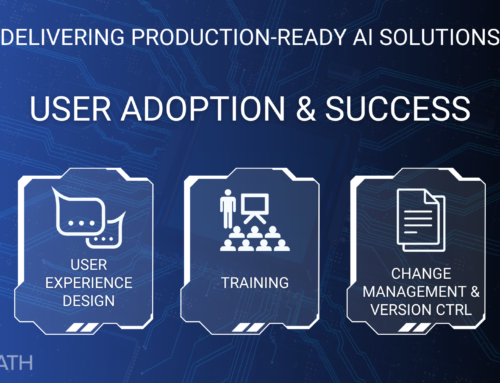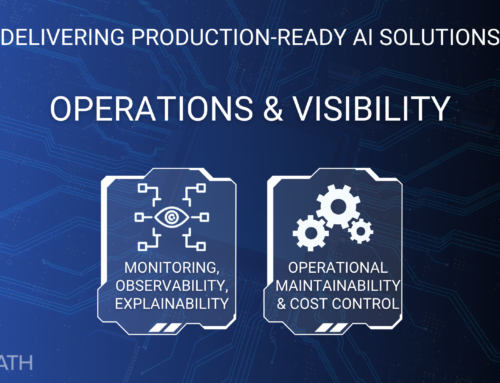The Challenge Every Sales Team Knows
Your best sales opportunities aren't always the ones that walk through your door. They're often buried in the daily flood of business announcements: funding rounds, new partnerships, executive hires, expansion plans, and industry developments.
The math is simple but brutal: thousands of relevant announcements get published every day, but your sales team can't possibly read them all. Meanwhile, your competitors are chasing the same opportunities, and the early bird gets the meeting.
We helped a company with exactly this problem. Their sales team was skilled at closing deals, but they were constantly playing catch-up. By the time they learned about promising developments at target companies, other vendors had already established relationships.
The Manual Approach Doesn't Scale
The company's initial solution was predictable: they assigned team members to monitor news sources and industry publications. The results were mixed at best.
Some days, they'd flag 50 articles that seemed relevant. Other days, they'd miss obvious opportunities because they were overwhelmed or focused on the wrong sources. The quality was inconsistent. Too many false positives mixed with genuine missed opportunities.
More importantly, it was expensive. They were paying skilled people to do work that didn't require their expertise, while their actual sales activities suffered from lack of attention.
A Different Approach to Information Processing
Instead of asking people to process more information faster, we built a system that handles the volume automatically and presents only what matters.
The system monitors hundreds of business publications, press releases, and industry sources continuously. But rather than simply collecting articles, it evaluates each one against specific criteria: Does this company fit the ideal customer profile? Does this development indicate a potential need for the client's services? Is the timing right for outreach?
The key insight was that while every company's sales criteria are different, the evaluation process follows consistent patterns. The system learns what makes a good lead for this particular business, then applies that judgment to every new piece of information.
Results That Matter to the Bottom Line
The system identifies more qualified opportunities than the manual process had found. More importantly, the quality improved dramatically with fewer wild goose chases, more meaningful conversations.
The sales team's time allocation shifted completely. Instead of spending mornings reading through industry news, they were making calls to companies that had just announced developments indicating potential need. Instead of cold outreach, they were having warm conversations about recent company developments.
The financial impact was measurable: their close rate improved because they were having better-timed conversations with more qualified prospects. Their sales cycle shortened because they were connecting with companies at the right moment in their decision-making process.
The Broader Principle
This project illustrates a pattern we see across industries: businesses drowning in information that contains genuine value, but lacking the capacity to process it effectively.
The same principle applies whether you're monitoring news for sales leads, tracking regulatory changes for compliance, analyzing customer feedback for product improvements, or scanning industry developments for competitive intelligence.
In each case, the challenge isn't accessing information. The problem is filtering signal from noise at scale, then presenting the results in a way that enables immediate action.
What This Means for Your Business
Most companies have their own version of this information overload problem. Your team probably has processes that involve:
- Manually monitoring multiple sources for relevant developments
- Having skilled employees do repetitive evaluation work
- Missing opportunities because of inconsistent or incomplete coverage
- Spending too much time finding information and not enough time acting on it
The solution isn't hiring more people to process more information. It's building systems that handle the volume automatically while maintaining, or improving, the quality of evaluation.
The companies that solve this problem first gain a significant advantage. They respond faster to opportunities, allocate their people's time more effectively, and make decisions based on more complete information.
Moving Beyond Information Overload
If your team is spending significant time manually processing large volumes of information to find what matters, that's a strong candidate for this type of solution.
The key is identifying processes where:
- The volume of information exceeds your team's processing capacity
- Clear criteria exist for what constitutes valuable information
- Acting quickly on good information provides competitive advantage
- Your current manual process is inconsistent or incomplete
These are the situations where automated information processing delivers measurable business value, not by replacing human judgment, but by ensuring that judgment gets applied to everything that matters.
Your Next Step
The sales lead monitoring system we built demonstrates how companies can turn information overload from a liability into a competitive advantage. But the same principles apply to any situation where your team needs to process large volumes of information to identify what requires action.
What information sources does your team monitor manually? Where are you missing opportunities because of volume or timing constraints? Those are the processes that could benefit from this approach.
We specialize in building systems that handle information processing at scale while maintaining the specific evaluation criteria that matter to your business. Not generic solutions, but custom approaches that reflect how your industry and your company define value.
Ready to explore how this could work for your specific information challenges? Let's discuss the manual processes that are limiting your team's ability to act on what matters most.





